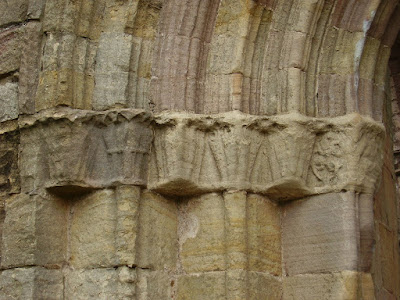
The five Community Pay Back options up for the public vote in North East Lincolnshire are all public filthy areas which need to be cleared up. So my idea (blogged on 31st March) ‘that a quiet but well orchestrated local church initiative could maximise the votes cast for constructive projects in which offenders can take pride and learn skills rather than for those which are menial or which put the offenders on display’ looks as if it had been anticipated and very effectively side stepped.
The on-line voting system doesn’t include a ‘none of the above’ option, but the Probation Service phone number (01472 246405) simply links to an answering machine so I was able to leave my ‘vote’ for an alternative constructive option there. I have no idea whether or not this will count as a ‘spoilt paper’, but the line is open until 24th April so if I get space over Easter it might still make sense to canvass around who else might be encouraged to leave constructive suggestions there.
Comments about the vote on the local paper’s website should bring real pride to those who have driven through this policy. They include ‘Please tell the scumbags doing the cleaning to leave their wallets / ipods / mobile phones at home as they may get mugged’, ‘Now there is an idea, away days for prisoners, work parties linked together by some means sent off to different black spots from the jails, uniforms with stripes on would be very appropriate’, ‘this scheme should be extended to long term benefit claimers - if you want your dole money this week, be here at this time and earn it’ and ‘Send them up to my posh estate, not to clean up but just so we can poke them with sticks and throw things at them’.
Actually (to link the two topics about which recently I’ve blogged most) the people who should be most proud are the BNP. Just as the Green Party’s greatest success wasn’t electoral breakthrough but was getting main stream parties to see the electoral advantage of adopting environmental concerns, it is possible that the BNP’s greatest success so far is to get a Labour Government to see the electoral advantage of adopting and implementing vindictive law and order policies.
Meanwhile, the replacement gates at the entrance to the churchyard at St Michael’s were finally delivered and fixed in place on Thursday, the local authority’s Trees and Woodlands Officer and I heard, searched for and briefly glimpsed a woodpecker in St Nicolas’ churchyard on Friday morning, and the member of the congregation I visited on Friday afternoon had brought home the washing of the elderly patient she did not know but who happened to be in the hospital bed next to her husband.

 ‘I always thought I’d be the one who died first,’ a widower said to me last week (he’d been seriously ill several times in the years before his wife died) ‘but now I’m glad I didn’t because I wouldn’t have liked her to have been as sad as I am’.
‘I always thought I’d be the one who died first,’ a widower said to me last week (he’d been seriously ill several times in the years before his wife died) ‘but now I’m glad I didn’t because I wouldn’t have liked her to have been as sad as I am’.




























+of+Temp+252.jpg)












